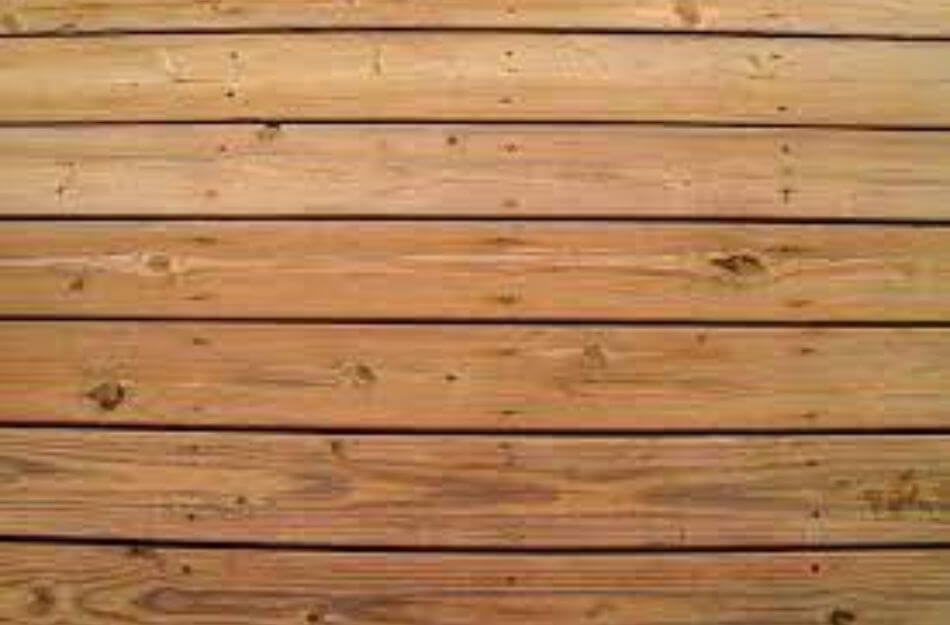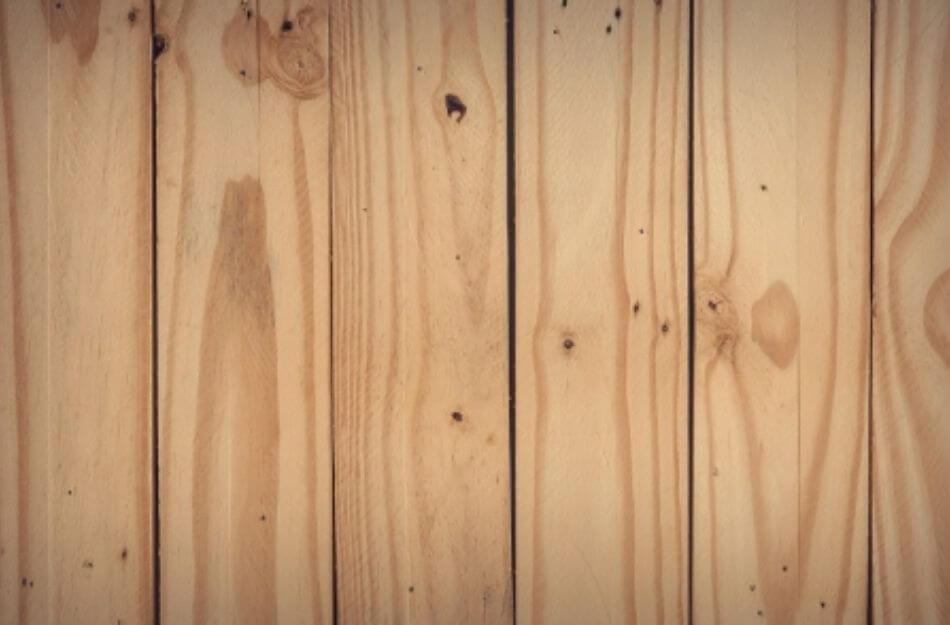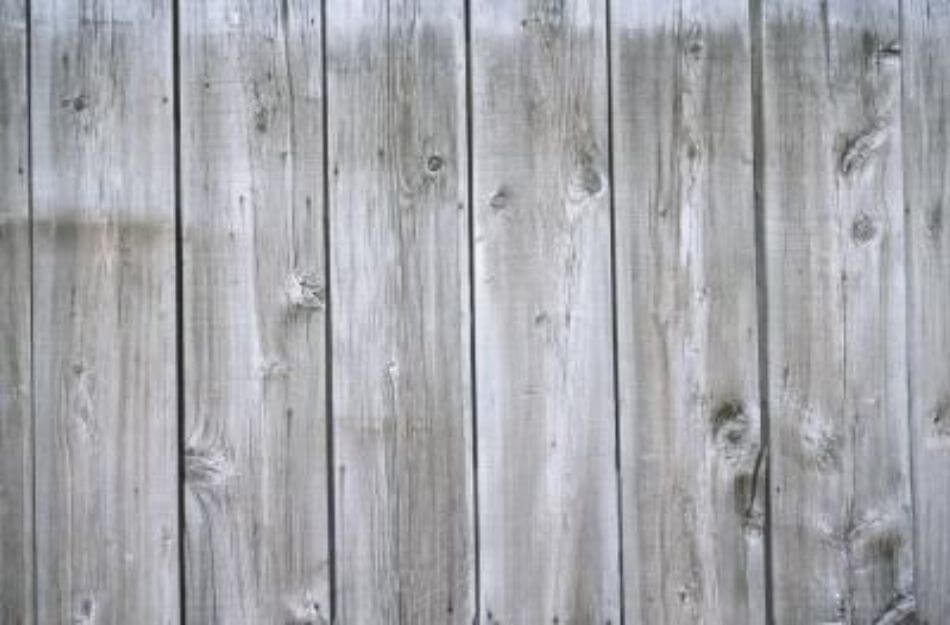Wood that has been pressure-treated is frequently used to construct decks and other exterior structures. The wood has been specially treated to prevent insects and other pests that might reduce its lifespan.
However, how long must you wait before staining it?
You must wait at least four weeks before staining or painting the majority of pressure-treated wood varieties. To start the process, if you reside in a humid region, you must wait even longer, possibly up to 6 months.

How do you determine if the wood is prepared for staining or painting? Let’s look at how to check and what happens if you try to stain wood too quickly.
Table of Contents
- 1 How Long Should You Let Pressure-Treated Wood Dry Before Staining It?
- 2 Factors that Affect How Long Pressure-Treated Wood Takes to Dry
- 3 How Do You Know If Pressure Treated Wood Is Ready For Staining?
- 4 What Happens if You Stain Too Soon?
- 5 Should You Let Pressure Treated Wood Dry Before Staining?
- 6 Which Stain for Pressure-Treated Wood Is Best?
- 7 Should Pressure-Treated Wood be Stained?
- 8 How Long Before I Can Seal Pressure-Treated Wood?
- 9 How Do You Know if Pressure-Treated Wood is Dry Enough to Stain?
- 10 How Long Does it Take for Pressure-Treated Wood to Dry?
- 11 What Kind of Paint Do You Want To Use?
- 12 What Happens if I Stain Wet Wood?
- 13 Is Wood Stain Safe After It Dries?
- 14 Final Words
How Long Should You Let Pressure-Treated Wood Dry Before Staining It?
Wait a minimum of four weeks before starting the pressure-treated wood staining procedure. However, you might have to wait up to six months in some places.
The reason for the wide variety is that the length of time you must wait varies depending on your location and the weather. For instance, you must wait much longer than in a region with lower humidity.
Beyond climate, the time you must wait also relies on the kind of wood you are using and how it has been treated.
To make an accurate quote, it is a good idea to find out what type of wood was used if you hired a contractor to install your pressure-treated wood feature.
Pressure-treated wood that has been wet will probably need to dry for the complete six months before you are able to stain it.
Unless you live in a humid area, other kinds, like Kiln-treated wood, maybe stain-ready in a few days.
Based on the estimates of the expert who sold you the wood or installed it at your home, you should wait as long as possible for the best outcomes.
However, there are ways to check the wood to see if it is prepared for stain if you should have asked.
Also Read: Staining Pressure Treated Wood To Look Like Cedar
Factors that Affect How Long Pressure-Treated Wood Takes to Dry
Each type of wood has a distinct waiting period. The time treated wood takes to dry depends on several variables. You may have to wait between 4 weeks and 6 months extra for them.

Let’s examine these elements and how to choose the appropriate waiting period.
Wood Type
Will you paint your project as soon as they are finished? The sort of treated wood you are using makes a big difference. Workers frequently use two primary types of wood for outdoor projects:
Wet Pressure-Treated Wood
Wet pressure-treated wood injects additives deep inside the wood using high pressure. It is not permitted to burn pressure-treated wood because chemicals were used during this procedure.
When it is sold at the wood shops, it is still wet. When you take up this wood from the store, it is still wet to the touch. It is a greenish color.
Suppose you obtain wet pressure-treated wood and reside in a region with minimal humidity. In that case, you can wait two to three weeks before staining your wooden fence.
If you reside in a high-humidity area like ours, it may take three to six months for your larger wood to dry.
See Also: How To Stain A Deck With Brush? | Expert Way To Do It
Kiln-Dried Pressure-Treated Wood
Pressure-treated wood that has been kiln-dried is still handled the same way. The kiln-drying procedure lessens the cracking and warping of wet pressure-treated wood.
Since it is already dry and ready to stain immediately, kiln dried is more solid. The majority of neighborhood wood shops rarely keep it in stock, and it is typically priced higher than wet pressure-treated wood.
Temperature In Your Area
The weather is another significant factor in deciding how long treated wood takes to dry.
You must wait additional weeks to stain your wood if you reside in one of the coldest regions, where the winters are too lengthy. It might take two weeks or a month.
However, keep an eye on the wood by performing repetitive water tests.
Treated wood is likely to dry quickly in dry, hot climates with easy access to sunlight all year long. Dry time will be too short in Asian countries where summertime lasts excessively long, about 6 months.
It would take longer in tropical regions than you anticipated because heavy rains will make the air muggier. Therefore, it might take longer than four weeks.
Level Of Humidity In Your Area
It follows a double-checked process. The treated wood itself or the surrounding air may both contain moisture. At most, 55% humidity should be present.
According to the situation, the likelihood of wood becoming damaged would rise if moisture levels rise above 55%. Floorboards and exterior wooden frames will expand.
However, based on the humidity outside, the moisture content inside the wood should also range from 8% to 25%.
You may need to delay longer before beginning painting if the relative humidity rises above this point. Most often, it occurs in equatorial regions.
The best action is to expose wood to sunlight as frequently as possible. Moisture will routinely evaporate in this manner.
Don’t Miss: When To Stain A New Cedar Deck?
How Do You Know If Pressure Treated Wood Is Ready For Staining?
If treated wood is set to be stained, it can be done in one of two methods. The first is a relatively easy method that anyone can try for nothing.

How long to delay before painting wood? There are a lot of different perspectives. In other terms, a specific time frame has yet to be discovered.
As a result, employees frequently engage in guessing games. However, there is a solution to this issue.
Test the Water
Pour some clean water on a piece of wood you anticipate to dry. The wood is ready to be painted if the water absorbs right away. It indicates that paint layers will attach to the wood’s pores.
If the water beads up, wait a few more days before repeating the procedure to determine whether the area is dry.
Use a Wood Moisture Meter
If you don’t know how to use a moisture meter then don’t worry, we have compiled the instructions for you. The proper way of using a moisture meter is mentioned below:
- Try to use technology to reduce guesswork.
- Use a pin-style wood moisture meter to determine whether the wood is dry.
- Turn on the meter after inserting the pins within the wooden component.
- The measurement on the screen will appear as electrical current flows from one pin to another. That would inform you of the wood’s present water resistance.
What Happens if You Stain Too Soon?
Staining or painting pressure-treated wood can be expensive too early because you will have to buy more stain or paint later to attempt again once the wood has dried.
It is preferable to wait until the wood is fully dry before staining or painting it.
Sometimes people become impatient and try to stain or paint their wood without waiting. The stain is a liquid, so it won’t soak into the wood when it gets wet, which is an issue.
The stain or paint will only stick to your wood if you attempt to stain it soon. So you’ll have to attempt painting or staining the wood again later.
Should You Let Pressure Treated Wood Dry Before Staining?
Yes, it is required to let the pressure-treated wood dry before staining. Woodworkers must wait until treated wood has dried fully before staining it.
Wood is typically pressure-passed through specific chemicals to lengthen its lifetime. It is likely to develop pores that retain wetness during this process. It’s still early in the game for stores up for sale.
Consequently, it is advised to delay before the stain. However, you can use it to construct your endeavor. The final stage should always be staining.
If you wait too long, you might assume your tasks will take longer. Remember that your efforts might be for something if you take your time. Wood may become less durable, and hasty painting may cause fractures.
Which Stain for Pressure-Treated Wood Is Best?
There are numerous choices available when selecting a staining substance for pressure-treated wood. Water-based treatments are less toxic and simpler to use.

It might only partially stick to the wood’s deeper grains. Additionally, you have the option of colored or natural-looking procedures.
An oil-based pigment is what our expert woodworkers advise using on pressure-treated wood. Because they are water-resistant and can fully absorb wood grains, oil-based stains are their preferred choice when sealing outdoor wood.
Oil-based stains also provide a uniform finish and don’t leave unsightly knee lines behind. Oil-based stains dry much more slowly than water-based stains, giving you a longer period to blend and smooth out the brush lines.
It’s also crucial to be aware that some sections, like the ends, will require more stain than others, requiring multiple coats.
Therefore, when choosing the best stain for pressure-treated wood, look for a sufficient quantity to finish the work completely.
Additionally, choose names that are secure for the environment and won’t harm you or the skin when stained.
It is best to use volatile organic compounds (VOCs) while donning safety gear like a cotton mask or respirator, To prevent breathing in dangerous fumes.
What is the substance on pressure-treated wood that is green?
Should Pressure-Treated Wood be Stained?
Pressure-treated wood can be stained to extend its life and maintain its natural beauty while preventing cracks and splits from weather changes.
The sun, rainfall, and other outdoor elements can harm pressure-treated wood. However, you can stop that from occurring.
You May Also Find Helpful: What Happens If You Stain Treated Wood Too Soon?
How Long Before I Can Seal Pressure-Treated Wood?
Suppose the project was constructed with wood that wasn’t kiln-dried after treatment; in that case, most makers of stains and paints advise waiting a week to two months before adding a finish to treated wood. (KDAT).
How Do You Know if Pressure-Treated Wood is Dry Enough to Stain?
Try the “sprinkle” test to see if pressure-treated wood is cured enough to stain. If the wood absorbs water within 10 minutes of application, plan to stain the wood as quickly as possible.
The wood requires more drying if the water beads or collects on the surface.
How Long Does it Take for Pressure-Treated Wood to Dry?
Before being primed or painted, pressure-treated wood requires time to dry out. It will take 3–4 months to reduce the dampness levels completely.

It’s still too damp if moisture beads up on the top. When the treated wood absorbs water rather than repelling it, you’ll know it’s ready to be painted.
What Kind of Paint Do You Want To Use?
Before you begin, planning the sort of paint you’ll use is crucial. Two kinds of paints can be used on treated wood: oil- and water-based.
Water-based pigments can be easily removed and are no longer useful. Moisture-free treated wood is required for this paint type. Since the color itself contains water.
A formula built on oil is more resilient to the elements. Such paints should be applied to exterior projects to achieve long-lasting effects.
However, it also depends on your financial situation. Applying inexpensive paint is possible if you use the water-based method. However, you might need to use it more than once.
To extend the lifespan of water paint, painters frequently use base primer coatings.
What Happens if I Stain Wet Wood?
There will only be adequate adhesion if stain or sealer is attempted to be applied over wet or dirty wood. Additionally, check for mold.
To accomplish this, scrub your deck with a wood cleaner. You should cleanse your deck with a wood stain/sealer cleaner if there are still any traces of the previous sealer left behind.
Is Wood Stain Safe After It Dries?
All wood stains are poisonous when liquid, but they stop being toxic once completely dried. Depending on the type of stain and brand, this procedure can take anywhere from 3 to 30 days.
Volatile organic compounds, or VOCs, discharge as the stain dries into the air.
Final Words
Overall, you should wait a month before attempting to stain pressure-treated wood for the staining and painting procedure to function properly.
You should wait even longer, potentially up to six months, if you reside in a humid area.
The pressure-treated wood must be allowed to dry completely before staining. Trying to stain your wood too quickly will be a good use of both money and time; you will have to start over once the wood has dried.
Recent Posts
Although deck sealing may not be at the top of your summer to-do list, you shouldn’t put off a task.One such deck that channels the opposite of the lively and enjoyable vibe you want from an...
Any home would benefit from having a deck because it adds more area for socializing, relaxing, and outside activities.Garden decking that has been properly polished can be elegant and lovely. It...
